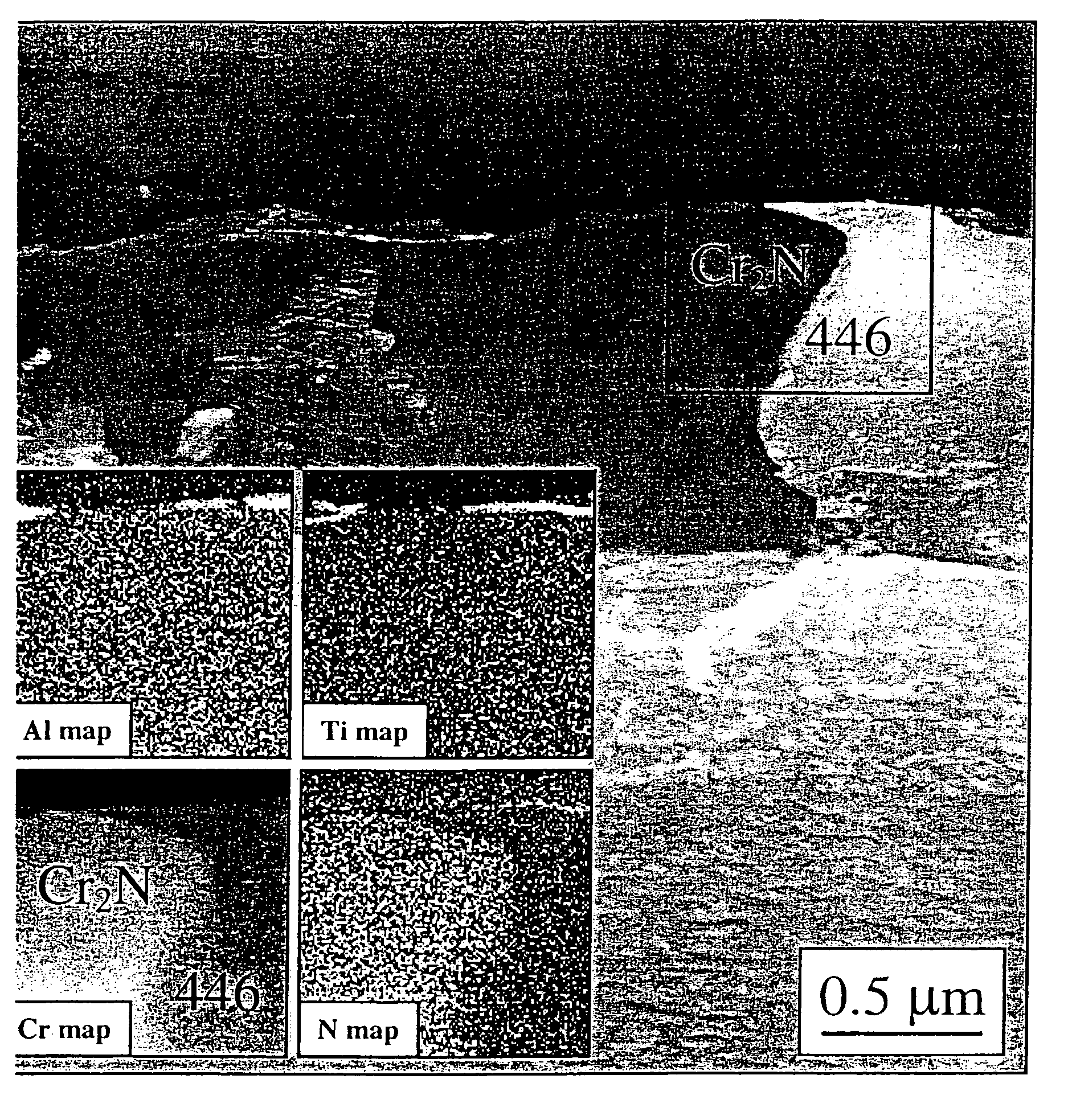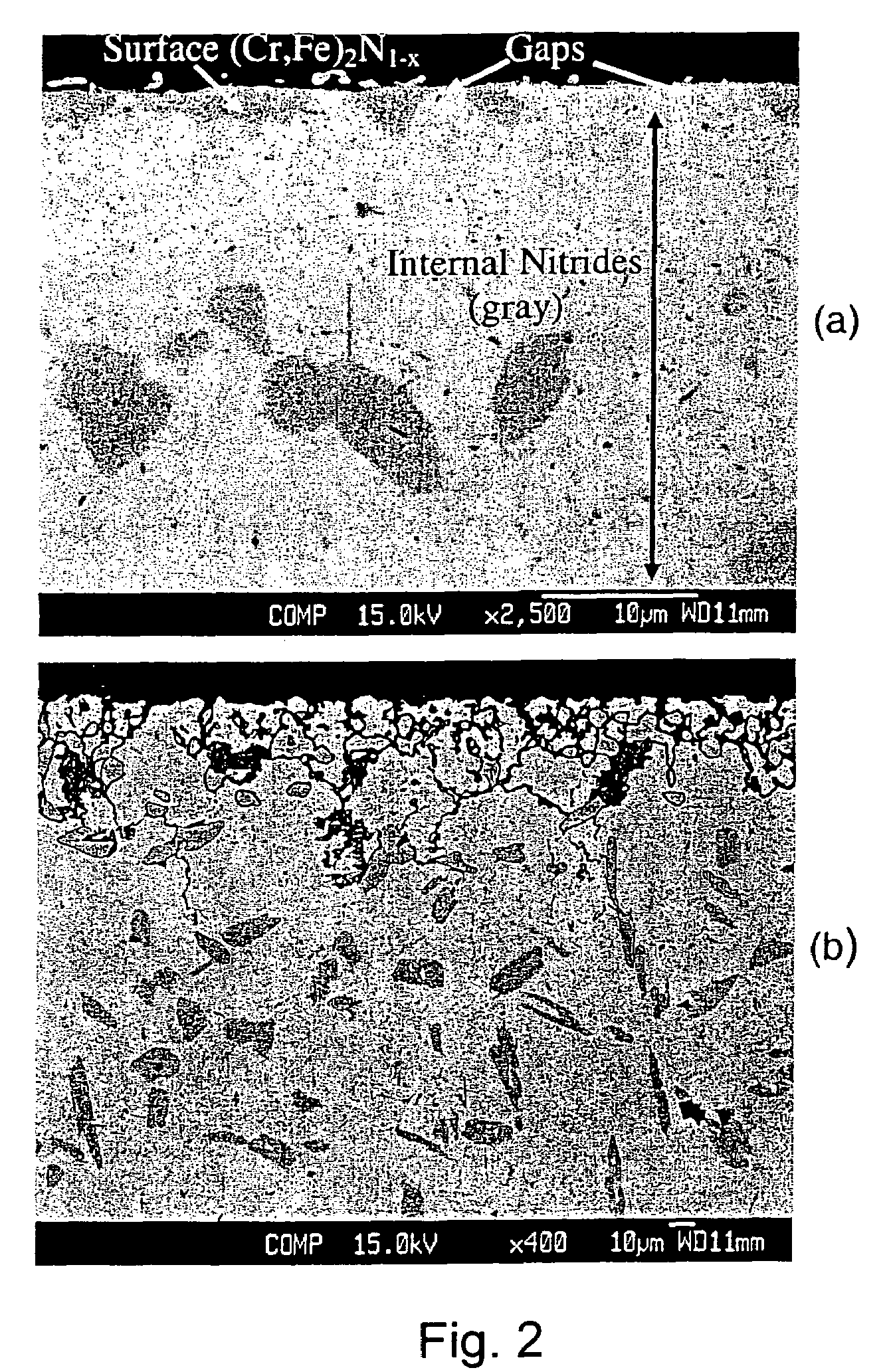Surface modified stainless steels for PEM fuel cell bipolar plates
a fuel cell bipolar plate, surface modification technology, applied in the direction of cell components, natural mineral layered products, instruments, etc., can solve the problems of high cost, high cost, brittleness and expensive machine, etc., and achieve the effect of improving corrosion resistan
- Summary
- Abstract
- Description
- Claims
- Application Information
AI Technical Summary
Benefits of technology
Problems solved by technology
Method used
Image
Examples
examples
[0040]The following Examples have been presented in order to further illustrate the invention and are not intended to limit the invention in any way.
1. Experimental
1.1 Material
[0041]Stainless steel plates were obtained from J&L Specialty Steel, Inc. The nominal composition is: 0.03 C, 28.37 Cr, 3.50 Mo, 2.96 Ni, 0.43 Mn, 0.42 Si, 0.75 Ti+Nb (weight %) with Fe as the reminder. This composition is representative of the mod-1 variation of AISI446 (UNS S44660). It should be noted that AISI446 mod-1 is referred to herein as AISI446 for convenience. The analyzed composition of this alloy by inductively coupled plasma (ICP) and gas fusion was 0.02 C, 27 Cr, 3.7 Mo, 2 Ni, 0.37 Mn, 0.4 Si, 0.47 Ti, 0.03 Nb, 0.1 V, 0.1 Cu, 0.06 Co, 0.06 Al, 0.012 P, 0.0253 N, 0.001 S, 0.0025 O, balance Fe (weight %). Alloy plates were cut into samples of 2.54 cm.×1.27 cm. (1.0×0.5 inches). The samples were ground through #600 grit SiC abrasive paper, rinsed with acetone and dried with nitrogen gas.
[0042]Therm...
PUM
| Property | Measurement | Unit |
|---|---|---|
| thick | aaaaa | aaaaa |
| temperature | aaaaa | aaaaa |
| thick | aaaaa | aaaaa |
Abstract
Description
Claims
Application Information
 Login to View More
Login to View More - R&D
- Intellectual Property
- Life Sciences
- Materials
- Tech Scout
- Unparalleled Data Quality
- Higher Quality Content
- 60% Fewer Hallucinations
Browse by: Latest US Patents, China's latest patents, Technical Efficacy Thesaurus, Application Domain, Technology Topic, Popular Technical Reports.
© 2025 PatSnap. All rights reserved.Legal|Privacy policy|Modern Slavery Act Transparency Statement|Sitemap|About US| Contact US: help@patsnap.com



